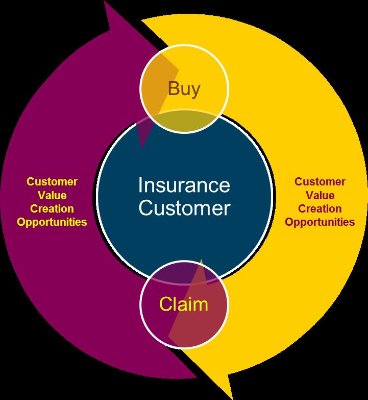“Do no harm.” That’s part of the doctor’s oath, and it was the underlying thinking behind Progressive’s launch of usage-based insurance (UBI) into the U.S. insurance market back in 2010. The message was straightforward – try our Snapshot device, and your insurance premium can only go down; how far down depends on how well you drive.
Fast forward five years of “Flo” hammering way at the virtues of UBI: Progressive claims $2.5 billion in annual premium emanates from UBI, and nearly every tier 1 carrier emulates Progressive’s format...and Progressive has announced, in March 2015, that it is going to charge higher premiums for the worst-behaving drivers, effectively dumping the concept of “Do no harm.”

And why not? As the pioneer of UBI in the U.S., Progressive has accumulated the trip data of millions and millions of customers over a number of years – tens of billions of miles of journey data coupled with hundreds of thousands of claims – giving the company unique insights into the behaviors that cause accidents. Based on listening to customers, the marketing program has now shifted from “Plug it in. Drive. Save.” to the concept of “Rate suckers” – bad drivers getting a free ride on the premium that safe drivers pay.
Progressive’s research showed that 89% of drivers would be upset to find out that their premiums were subsidizing bad drivers. So loading the premiums of bad drivers backs up the marketing message and should further fuel the positive selection of good drivers moving to Progressive, while chasing away the bad drivers to cheaper, less-data-savvy carriers. This adverse selection for Progressive’s competitors will eventually move the market to fully data-driven underwriting over the medium term.
All this goes to show is that UBI is not your typical Insurance product. Key to success for Progressive has been:
- the ability to accurately model the risk and develop a compelling pricing model based on the new data made available from the telematics device
- creating an attractive customer proposition and educating the market in the benefits of the proposition with a targeted campaign
- implementing the operational processes that deliver on the promise of the marketing message
Many insurers get dazzled by the telematics gadget and technology and lose sight of the fact that success really turns on delivering a compelling customer proposition fueled by deep customer insight. I find it intriguing that many UBI programs are still being run by IT departments, as the proposition will only be truly successful when the strategy, marketing, product development and operations teams become involved.
I have run a number of telematics engagements, and the technology is quite straightforward. Arguably, the hardest part is finding where to plug in the telematics sensor on the vehicle. Usually, data starts to flow almost immediately, and drivers start getting scores the following day.
However, that UBI plugging-in and data flow marks a “moon landing,” as your relationship with the insurance customer will be forever changed.

Let’s face it, in the past a customer usually shopped for the cheapest price of motor insurance, bought it and then tucked the policy away in the glove compartment of the vehicle with little or no contact with the insurer until it came time to claim or renew. With UBI, the insurer provides customers with a companion mobile app (and website) that gives daily feedback on their driving skills and opens up a range of value-added services like:
- Real-time vehicle location viewing
- Teen safety monitoring (geo-fencing)
- Driver feedback (rating, score) -- continuing tips to improve driving style and reduce accident risk
- Trip replay capability, with mapping
- Driver behavior indicators (harsh braking, reckless driving, acceleration) within trip
- Logbook – trip information – tax and fuel log expense claims
- Parking meter reminder
- Vehicle fault notifications
- eCall (emergency/panic button) and bCall (breakdown)
You may have noticed I have skirted the issue of “push” marketing offers, which this connectedness will certainly open up. If handled with the mindset of truly benefiting the customer, then this could be a good thing, but it’s a fine line between good and “spam.” I have advocated elsewhere that dynamic affinity offers, when coupled with a high degree of personalization, will present much greater value to the customer rather than the scatter-gun coupon books that typically prevail today.
In China, over the last 18 months, quite a few insurers have piloted UBI propositions in advance of the deregulation, and affinity offers – value-added services – have figured prominently. Most have offered a flat 10% insurance discount for simply trying out UBI.
PICC, in partnership with Tencent and Shell, launched the “Lubao” box in early 2014. It’s a plug-in device that connects to a mobile App that displays the current status of the car, runs routine diagnostics, offers advice on fuel-saving driving techniques, provides discounts on Shell products, provides road-side assistance and funnels all that data back to the insurance company and its partners. Seems like a dress rehearsal for rolling out a full “Progressive-style” pay-how-you-drive insurance program when regulations allow.
Other insurers have offered time-saving features like streamlining the payment of traffic violations, which I am told can be quite inconvenient in China.
In some Asian markets, women’s safety while driving has been seen as a good landing place for the UBI proposition, with a “panic” button being built into the app. In other markets, where organized fraud is rampant, UBI provides the data to effectively be a silent witness to what really happened and protect the interest of the customer and the insurer. In Ireland, a fraud ring was systematically targeting drivers on country-side round-abouts and making phony whiplash claims at more than $20,000 per person. The data from the UBI device would help stamp out those kinds of claims, sparing the customer from the resulting increased premiums and months and months of mental anguish during the claim settlement process.
In several markets, the advent of UBI has been the key to making insurance affordable for young drivers and families with young drivers. And in Europe, where discrimination based on gender was banned several years ago, a new insurer, Drive-like-a-Girl, launched a telematics proposition quite similar to Progressive’s, where anyone with good driving habits (driving like a girl) earns a discount, eliminating the need for proxy rating factors such as age and gender.
The UBI proposition winds up being quite beneficial all around. Firstly, the community wins with improved road safety and easier-to-understand motor insurance contracts – pay for what you use. Secondly, customers win with cheaper insurance, with the ability to control the cost by improving their skills, plus they get a whole range of new features from vehicle fault monitoring through to faster claims settlement. Finally the insurer wins, as it accurately monitors risk and uses data to find new ways to engage customers – moving the conversation from price to value and establishing life-time brand associations with customers.
Do no harm. It’s certainly a good starting place as it gets you thinking from the customer’s perspective, but UBI presents a whole lot of value simply waiting to be unleashed for everyone. Just find what’s most important for your customers, and you should have a success when you launch your own UBI proposition.
See you in the parking lot. :-)
 And why not? As the pioneer of UBI in the U.S., Progressive has accumulated the trip data of millions and millions of customers over a number of years – tens of billions of miles of journey data coupled with hundreds of thousands of claims – giving the company unique insights into the behaviors that cause accidents. Based on listening to customers, the marketing program has now shifted from “Plug it in. Drive. Save.” to the concept of “Rate suckers” – bad drivers getting a free ride on the premium that safe drivers pay.
Progressive’s research showed that 89% of drivers would be upset to find out that their premiums were subsidizing bad drivers. So loading the premiums of bad drivers backs up the marketing message and should further fuel the positive selection of good drivers moving to Progressive, while chasing away the bad drivers to cheaper, less-data-savvy carriers. This adverse selection for Progressive’s competitors will eventually move the market to fully data-driven underwriting over the medium term.
All this goes to show is that UBI is not your typical Insurance product. Key to success for Progressive has been:
And why not? As the pioneer of UBI in the U.S., Progressive has accumulated the trip data of millions and millions of customers over a number of years – tens of billions of miles of journey data coupled with hundreds of thousands of claims – giving the company unique insights into the behaviors that cause accidents. Based on listening to customers, the marketing program has now shifted from “Plug it in. Drive. Save.” to the concept of “Rate suckers” – bad drivers getting a free ride on the premium that safe drivers pay.
Progressive’s research showed that 89% of drivers would be upset to find out that their premiums were subsidizing bad drivers. So loading the premiums of bad drivers backs up the marketing message and should further fuel the positive selection of good drivers moving to Progressive, while chasing away the bad drivers to cheaper, less-data-savvy carriers. This adverse selection for Progressive’s competitors will eventually move the market to fully data-driven underwriting over the medium term.
All this goes to show is that UBI is not your typical Insurance product. Key to success for Progressive has been:
 Let’s face it, in the past a customer usually shopped for the cheapest price of motor insurance, bought it and then tucked the policy away in the glove compartment of the vehicle with little or no contact with the insurer until it came time to claim or renew. With UBI, the insurer provides customers with a companion mobile app (and website) that gives daily feedback on their driving skills and opens up a range of value-added services like:
Let’s face it, in the past a customer usually shopped for the cheapest price of motor insurance, bought it and then tucked the policy away in the glove compartment of the vehicle with little or no contact with the insurer until it came time to claim or renew. With UBI, the insurer provides customers with a companion mobile app (and website) that gives daily feedback on their driving skills and opens up a range of value-added services like:








